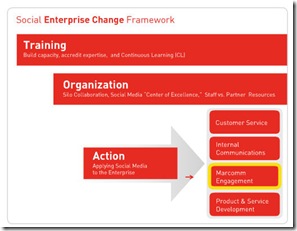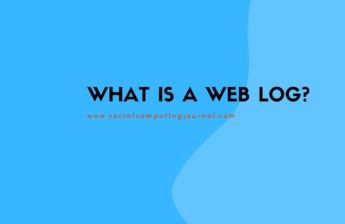One of the things I like about Ogilvy’s latest report on the need for brands to adopt a comprehensive social media strategy is how they make it clear that social media isn’t owned by one department or the other.
In particular, it’s this ownership volley that costs too many companies precious time and reduced effectiveness. It’s much easier to rally the business units that want to step up and commit resources and budget.
The other thing that stood out is Ogilvy’s Social Enterprise Change Framework. There’s simply not enough frameworks out there to anchor how companies can begin thinking about an interactive strategy. Heck, I still reference Forrester‘s POST methodology for some of the sessions I’ve run. What the Ogilvy framework smartly outlines are the steps required for brands to establish “Centers of Excellence” — yes the COE is back. And it actually maps really well to the challenges I see in the marketplace. Without sharing the burden — ok, tasks — companies are easily victimized by the silo effect and just can’t scale social media expertise across the organization.
The “Action” step in the diagram shows how talent needs to be peppered throughout the organization. Which lines of business to start with can often be the most daunting exercise. It’s hard to look inward and admit your customer service sucks needs improvement, although half the Twitterverse probably already knows it.

And while “action” is the right word in this context, I’m seeing companies act with more preciseness these days, as if engagement strategies were planned for long-term sustainability. I know, what a concept, right? Part of it’s from earlier social media war wounds and part of it’s due to the listening capabilities that are now utilitarian. What the Ogilvy whitepaper also largely underscores is how twenty-ten will be year that social media’s shiny new object affliction is finally cured.

